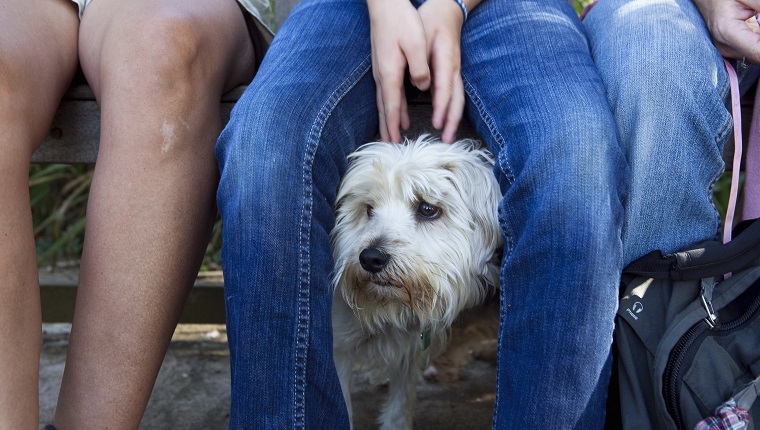Dogs are good at picking up on human emotions. That’s one of the things we love about them. They always seem to know when we need a cuddle to cheer us up, when we need a partner to share in our joy, and when we need a friend to act silly and relieve our stress or anger.
In fact, when it comes to disorders such chronic anxiety, dogs have been known to improve symptoms in some humans. However, if dogs can understand and affect our emotions — can our emotions, in turn, affect our dogs? If we’re anxious, can our dogs become anxious, too?
It is important to note that anxiety disorders are not contagious in the same way that other diseases, such as bacterial or viral infections, can be. Studies seem to indicate, however, that there is a correlation between unusual, anxious behavior in dogs and anxiety in humans who are close to them.
Here’s what you should know about how your anxiety might affect your dog.
How Do Dogs Sense Anxiety?
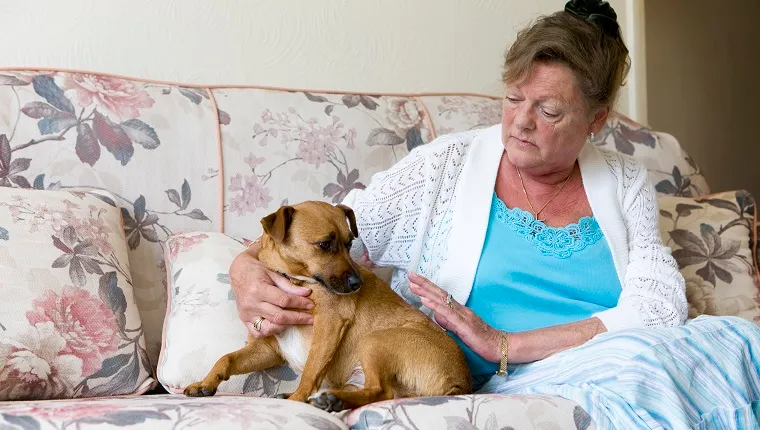
Dogs have many ways of detecting human feelings. They aren’t necessarily able to tell what we’re saying with our words all the time, but they can read several other ways that we communicate, including our body language, the tones and frequencies in our voices, and subtle signals we give off that even we can’t detect, ourselves.
When it comes to our body language, dogs can tell when there are changes in the way we move, our posture, and our facial expressions. Dogs are observant, particularly when it comes to the humans they are closest to, so they know what it looks like when we are anxious. They can see it on our faces.
Dogs can also detect the tones and frequencies in our voices, and they usually have a much better sense of hearing then we do. Chances are good that your dog can identify when you’re happy, sad, fearful, or anxious from your tone. They know which of your behaviors are associated with the sounds you’re making.
In this way, they may even be able to predict when you’re going to react with anger, when you are going to reward them because you are pleased, or when you are going to act unusually based on your anxiety — all by the sound of your voice.
Dogs can also detect subtle chemical changes in our bodies with their sense of smell. When we are anxious, we sweat. It’s sometimes next to impossible for us to see or smell, but dogs can detect that sweat, and that’s sometimes why we say dogs can “smell fear.”
The ability for dogs to detect these chemical changes is why we sometimes rely on dogs to detect diseases such as cancer or warn when someone will have a seizure.
Why Do Dogs Feel Anxious When You Do?
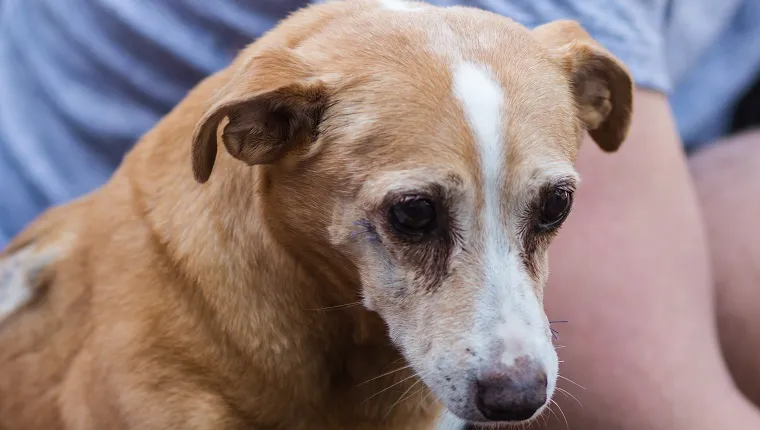
Dogs often look to their humans for cues on how to deal with and react to the world around them. When their humans project feelings of calmness and confidence, dogs tend to see their immediate surroundings as safe.
When humans are anxious, dogs tend to look to their environment for signs of threats. After all, there must be some reason that their protector is feeling anxious. When their humans are anxious, dogs tend to feel less safe and more anxious, as well.
Additionally, when a person has an anxiety disorder, they may start to act differently. They may feel nervous and distracted, unable to focus, and less willing to engage in the activities that they usually do.
This might mean an anxious dog parent doesn’t go for as many walks with their pup, or they’re less willing to play, or they start to vary their established routines. This affects dogs, too. They no longer know what to expect.
Dogs might not get enough exercise, stimulation, or attention, which can result in them feeling anxious and displaying symptoms of anxiety disorders, as well.
What Happens When Dogs Feel Anxious?
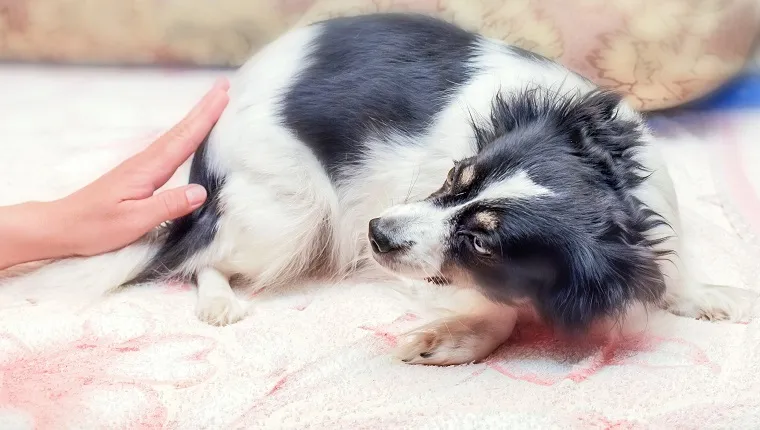
There are several symptoms of anxiety in dogs that you should look out for, especially if you feel anxious near your dog.
Anxious behaviors can include chewing objects around the house, having accidents even though they’re housetrained, licking or chewing at their own paws or skin, barking or whining, pacing, scratching, trying to escape, or showing physiological responses like dilated pupils, shaking, and excessive panting.
If you see these signs on a regular basis, it may mean your dog has an anxiety disorder instead of just a general feeling of anxiety.
The problem can go from bad to worse when dogs react to anxious humans and become anxious, themselves. For example, a person who’s anxious or fearful around dogs might tense up and stare.
Dogs can take this as a challenge posture and become anxious and defensive. This is when incidents can happen.
In fact, a study published in the Journal of Epidemiology and Community Health suggests that less emotionally stable people are more likely to be bitten by dogs. This is a correlation, not a causation, but it’s possible that anxious behaviors lead dogs to feel more anxious and respond with fear or aggression.
What Can You Do To Help Your Dog Feel Less Anxious?
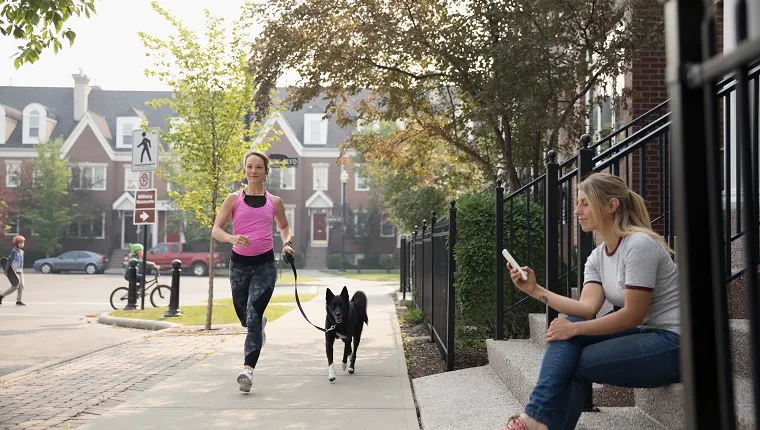
If you suffer from an anxiety disorder, I strongly recommend that you seek treatment that works for you. Your dog will benefit from you being less anxious, too.
However, if you are an anxious person, there are still ways that you can make sure your dog is as anxiety-free as possible. Here are a few tips that can help:
- Try to keep up a routine. You don’t have to do everything at the exact same time, but keeping things on a similar schedule, day after day, will help your dog understand what to expect and help them remain calm.
- Go for walks and maintain an appropriate exercise regimen for your pup. Exercise can help burn off some of the excess energy that can contribute to anxious behaviors.
- Don’t forget about mental stimulation, too. Puzzle feeders are a great way to make sure your dog is using their brain, as is training.
- Keep up with training sessions and use plenty of positive reinforcement. If your dog is getting bored, try learning some new tricks. Giving your dog something to do will help use up the mental energy they would spend on anxiety and will tire them out, which is a good thing.
- Also, remember to give your dog plenty of love and attention. It can be easy to get stuck in your own anxiety and forget about your dog’s needs. Not only will this be good for your dog, but it will be good for you, too. Studies show that interacting with your pet can reduce stress and anxiety, which will benefit both of you.
How do you make sure your dog doesn’t feel your anxiety? Do you think dogs feel the emotions of their humans? Let us know in the comments below!
